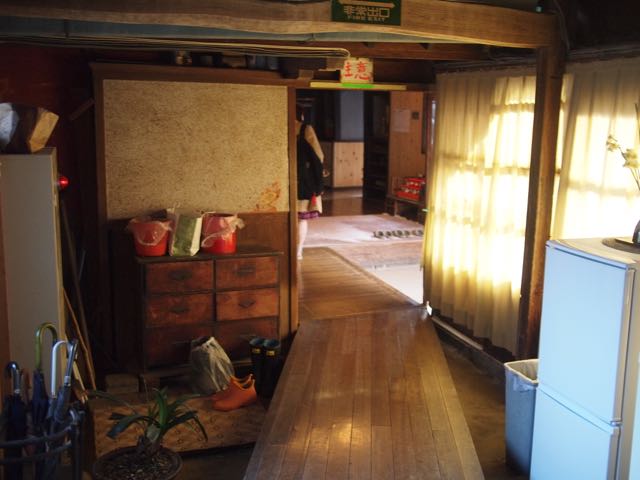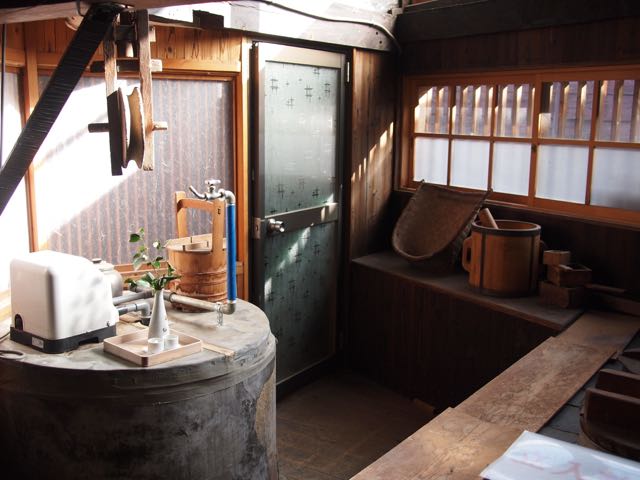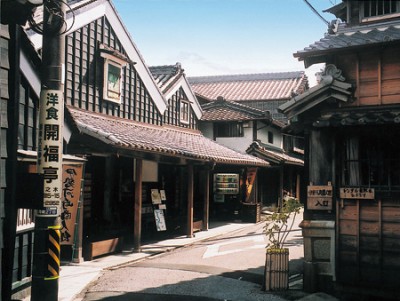Learning about Ise at Kogakkan: Day 11
At some point I’m going to have to write up all of the other things I’ve seen and done over the past four days. But for now, here’s a quick overview of the infrastructure that kept the sacred metropolis humming. Pictured here: the last remaining ryokan in Ise from before 1871, Asakichi 麻吉. Unlike the last onshi house, it is still operating, and is full of beautiful open spaces and antique calligraphy and porcelain, but it probably isn’t too popular with youngsters as it is quite cold in wintertime…

A constant influx of pilgrims and messengers to the Jingū meant a large population of employees and guests at the various onshi palaces and ryokan inns that had to be fed day in and day out, especially in Yamada, the Gekū area. With the rise of the onshi in the 1320s, a workshop and market area opened up in an area called Hatsukaichi (a name that means something like “Sunday Market”, from pre-medieval times). Hatsukaichi served not only the needs of the onshi, but also the Gekū itself, which needed to prepare food offerings for the kami every day. The merchants would sell their food to the Gekū in a building called the Korankan 子良館, which actually doubled as Japan’s first women’s college. Here, women were trained in ritual ceremony, which included the preparation of the sacred offerings. The Korankan was shut down alongside the onshi system in 1871.

The amount of work that needed to be done was quickly too much for the confined space of Hatsukaichi, and from the 1400s more serious, large-sale operations began in a separate area called Kawasaki 河崎, which was conveniently located on a river between Yamada and the ocean. By 1620, the crafts and trades in this are were so well-developed that merchants came from China to sell top-quality goods. The finished products would be floated down the waterways to the Korankan as well as various onshi estates. A Japanese economic historian summed up this area by saying, “Kawasaki is the throat of Yamada” 「河崎辺ハ山田の咽喉」.

For the first few hundred years, business was done using bartering and imported Chinese coins, since the Japanese government was not in a good state to produce its own currency. In the early 1600s, someone in Yamada came up with the idea of paper money, perhaps based on seeing Chinese banknotes. As a result, the Yamada Triad of elders took charge of printing Japan’s first paper money, Yamada Hagaki 山田羽書, which was produced continuously for over 200 years until the Japanese government declared a monopoly on money production, again in 1871. It featured different colors for different values of money, and anti-counterfeiting techniques. Like the onshi records, the Hagaki banknotes are mostly destroyed today, so we don’t know when exactly the system began. Chieda-sensei has spent the better part of a decade hunting down old ones. Pictured below is a one-momme note featuring Ebisu, god of prosperity.

Because it relied on business rather than patronage, Kawasaki survived after 1871 and many of its picturesque workshops are still standing, although they are slowly being demolished. The area is now oriented towards tourists and you can buy all sorts of cool antique stuff, rare prints, and old books. If you are looking to take a leisurely walk through Ise this is probably the best neighborhood to do it in.
Posted: March 5th, 2015 | Kogakkan
